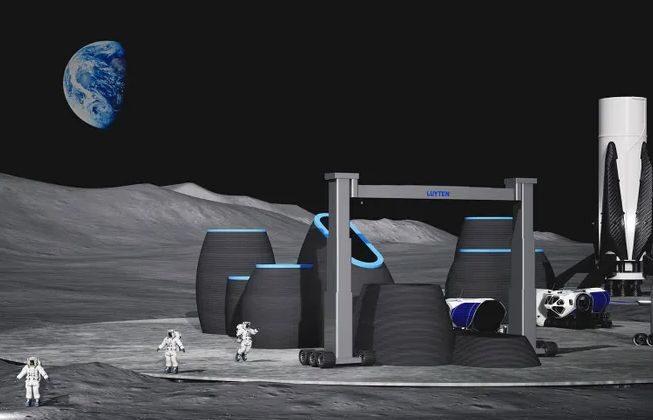An Australian construction company has partnered up with the University of New South Wales (UNSW) to fast-track the development of a 3D printer to build lunar dwellings.
Luyten co-founder and CEO, Ahmed Mahil, said he was over the moon about the collaboration.
“We are absolutely delighted and extremely honoured to be partnering with UNSW to make building on the moon possible. UNSW is renowned for its academic leadership and world-class research and we couldn’t be more pleased to be working together,” Mahil said in a press release.
He said the partnership will catapult Australia’s position forward in the space race.
“Our combined expertise and passion for innovative and exceptional building outcomes involving a range of intertwined disciplines will help the human race to expedite colonisation of the moon and other planets,” Mahil said.
Initially, lunar construction was not part of the plan.
“When we developed our groundbreaking 3D concrete printers, we thought we would be solving building and construction issues across the world—but with discussions currently taking place with people across the space industry we are now looking at solving building and construction issues on the moon,” Mahil said.
The 3D printer developed to undertake construction on the moon is light and robust.
“We have designed the printer for compactness using lightweight composites for its structure and robotic transforming technology, making it ideal for space transportation purposes,” Mahil said. “[It] can be set up in less than 30 minutes.”
According to UNSW Associate Professor Matthias Hank Haeusler, their main concern will be designing habitats with a shell that protects humans from radiation.
“Computational design allows to feed in scientific knowledge on how to protect humans from solar and cosmic radiation into a script that generates a shelter with the required 80 plus centimetres of solid material,” Haeusler said.
The need for the architecture to be strong enough to withstand meteorites and lunar quakes also makes for a highly elaborate mission requiring significant technology.
First, rovers will assess the location’s structural capacity. Meanwhile, other rovers will gather local building materials, to assess its mechanical properties. Robots will then feed the information directly to a 3D printer.
“Moon regolith will be the primary building material of the printed structures due to its abundance,” Mahil said. “After sourcing 3D printable material, the printer will start printing on the lunar surface. The materials will then be passed through the printing nozzle and form the layers of the structures.”
Haeusler said that the project can inform them in creating houses for Indigenous communities.
“The knowledge we generate for building on the moon can be translated directly into building housing for extreme climates such as heat or for addressing housing issues in remote Indigenous communities,” Haeusler said.





